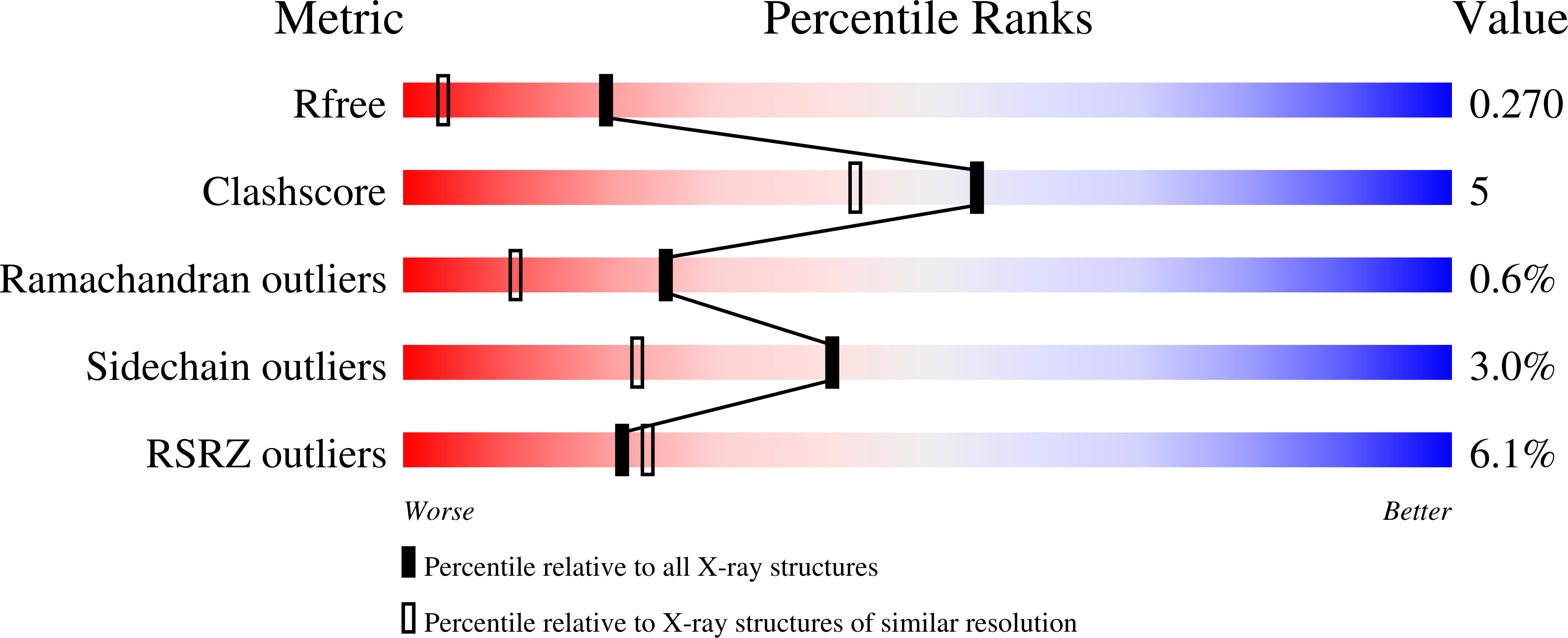Large-Scale Crystallographic Fragment Screening Expedites Compound Optimization and Identifies Putative Protein-Protein Interaction Sites.
Barthel, T., Wollenhaupt, J., Lima, G.M.A., Wahl, M.C., Weiss, M.S.(2022) J Med Chem 65: 14630-14641
- PubMed: 36260741
- DOI: https://doi.org/10.1021/acs.jmedchem.2c01165
- Primary Citation of Related Structures:
5ST0, 5ST1, 5ST2, 5ST3, 5ST4, 5ST5, 5ST6, 5ST7, 5ST8, 5ST9, 5STA, 5STB, 5STC, 5STE, 5STF, 5STG, 5STH, 5STI, 5STJ, 5STK, 5STL, 5STM, 5STN, 5STO, 5STP, 5STQ, 5STR, 5STS, 5STT, 5STU, 5STV, 5STW, 5STX, 5STY, 5STZ, 5SU0, 5SU1, 5SU2, 5SU3, 5SU4, 5SU5, 5SU6, 5SU7, 5SU8, 5SU9, 5SUA, 5SUB, 5SUC, 5SUD, 5SUE - PubMed Abstract:
The identification of starting points for compound development is one of the key steps in early-stage drug discovery. Information-rich techniques such as crystallographic fragment screening can potentially increase the efficiency of this step by providing the structural information of the binding mode of the ligands in addition to the mere binding information. Here, we present the crystallographic screening of our 1000-plus-compound F2X-Universal Library against the complex of the yeast spliceosomal Prp8 RNaseH-like domain and the snRNP assembly factor Aar2. The observed 269 hits are distributed over 10 distinct binding sites on the surface of the protein-protein complex. Our work shows that hit clusters from large-scale crystallographic fragment screening campaigns identify known interaction sites with other proteins and suggest putative additional interaction sites. Furthermore, the inherent binding pose validation within the hit clusters may accelerate downstream compound optimization.
Organizational Affiliation:
Macromolecular Crystallography, Helmholtz-Zentrum Berlin, Albert-Einstein-Stra?e 15, 12489 Berlin, Germany.
















